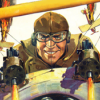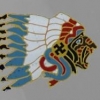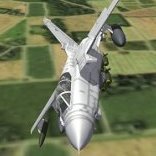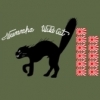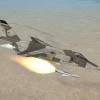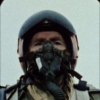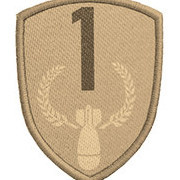Leaderboard
Popular Content
Showing most liked content on 09/03/2017 in all areas
-
6 pointsI'm very happy to present the new CAF team plane, the MiG-19SK. The CAF team is formed by Cocas, Wrench, Coupi, Nyghtfall, Valastur and Stratos. The MiG-19SK has been a truly team effort to deliver a fun, challenging and realistic plane for a early carrier based soviet navy squadrons. It all started thanks to Dizzyfugu, a WhatIf master, with this entry. https://www.flickr.com/photos/dizzyfugu/page22 Then everything started to move forward in the CAF team. We asked permission to Dizzyfugu to release the plane, and he kindly agreed, so kudos to him! Thanks mate! So without more waiting, the MiG-19SK story... After the success of the Soviet Union’s first carrier ship, the Moskva Class (Projekt 1123, also called „Кондор“/„Kondor“) cruisers in the mid 1960s, the country became more ambitious. This resulted in Project 1153 Orel (Russian: Орёл, Eagle), a planned 1970s-era Soviet program to give the Soviet Navy a true blue water aviation capability. Project Orel would have resulted in a program very similar to the aircraft carriers available to the U.S. Navy. The ship would have been about 75-80,000 tons displacement, with a nuclear power plant and carried about 70 aircraft launched via steam catapults – the first Soviet aircraft carrier that would be able to deploy fixed-wing aircraft. Beyond this core capability, the Orel carrier was designed with a large offensive capability with the ship mounts including 24 vertical launch tubes for anti-ship cruise missiles. In the USSR it was actually classified as the "large cruiser with aircraft armament". Anyway, the carrier needed appropriate aircraft, and in order to develop a the aircraft major design bureaus were asked to submit ideas and proposals in 1959. OKB Yakovlev and MiG responded. While Yakovlev concentrated on the Yak-36 VTOL design that could also be deployed aboard of smaller ships without catapult and arrester equipment, Mikoyan-Gurevich looked at navalized variants of existing or projected aircraft. While land-based fighters went through a remarkable performance improvement during the 60ies, OKB MiG considered a robust aircraft with proven systems and – foremost – two engines to be the best start for the Soviet Union’s first naval fighter. “Learning by doing”, the gathered experience would then be used in a dedicated new design that would be ready in the mid 70ies when Project 1153 was ready for service, too. Internally designated “I-SK” or “SK-01” (Samolyot Korabelniy = carrier-borne aircraft), the naval fighter was based on the MiG-19 (NATO: Farmer), which had been in production in the USSR since 1954. Faster and more modern types like the MiG-21 were rejected for a naval conversion because of their poor take-off performance, uncertain aerodynamics in the naval environment and lack of ruggedness. The MiG-19 also offered the benefit of relatively compact dimensions, as well as a structure that would carry the desired two engines. Several innovations had to be addresses: - A new wing for improved low speed handling - Improvement of the landing gear and internal structures for carrier operations - Development of a wing folding mechanism - Integration of arrester hook and catapult launch devices into the structure - Protection of structure, engine and equipment from the aggressive naval environment - Improvement of the pilot’s field of view for carrier landings - Improved avionics, esp. for navigation Work on the SK-01 started in 1960, and by 1962 a heavily redesigned MiG-19 was ready as a mock-up for inspection and further approval. The “new” aircraft shared the outlines with the land-based MiG-19, but the nose section was completely new and shared a certain similarity to the experimental “Aircraft SN”, a MiG-17 derivative with side air intakes and a solid nose that carried a. Unlike the latter, the cockpit had been moved forward, which offered, together with an enlarged canopy and a short nose, an excellent field of view for the pilot. On the SK-01 the air intakes with short splitter plates were re-located to the fuselage flanks underneath the cockpit. In order to avoid gun smoke ingestion problems (and the lack of space in the nose for any equipment except for a small SRD-3 Grad gun ranging radar, coupled with an ASP-5N computing gun-sight), the SK-01’s internal armament, a pair of NR-30 cannon, was placed in the wing roots. The wing itself was another major modification, it featured a reduced sweep of only 33° at ¼ chord angle (compared to the MiG-19’s original 55°). Four wing hardpoints, outside of the landing gear wells, could carry a modest ordnance payload, including rocket and gun pods, unguided missiles, iron bombs and up to four Vympel K-13 AAMs. Outside of these pylons, the wings featured a folding mechanism that allowed the wing span to be reduced from 10 m to 6.5 m for stowage. The fin remained unchanged, but the stabilizers had a reduced sweep, too. The single ventral fin of the MiG-19 gave way to a fairing for a massive, semi-retractable arrester hook, flanked by a pair of smaller fins. The landing gear was beefed up, too, with a stronger suspension. Catapult launch from deck was to be realized through expandable cables that were attached onto massive hooks under the fuselage. The SK-01 received a “thumbs up” in March 1962 and three prototypes, powered by special Sorokin R3M-28 engines, derivatives of the MiG-19's RB-9 that were adapted to the naval environment, were created and tested until 1964, when the type – now designated MiG-SK – went through State Acceptance Trials, including simulated landing tests on an “unsinkalble carrier” dummy, a modified part of the runway at Air Base at the Western coast of the Caspian Sea. Not only flight tests were conducted at Kaspiysk, but also different layouts for landing cables were tested and optimized as well. Furthermore, on a special platform at the coast, an experimental steam catapult went through trials, even though no aircraft starts were made from it – but weights hauled out into the sea. Anyway, the flight tests and the landing performance on the simulated carrier deck were successful, and while the MiG-SK (the machine differed from the MiG-19 so much that it was not recognized as an official MiG-19 variant) was not an outstanding combat aircraft, rather a technology carrier with field use capabilities. The MiG-SK’s performance was good enough to earn OKB MiG an initial production run of 20 aircraft, primarily intended for training and development units, since the whole infrastructure and procedures for naval aviation from a carrier had to be developed from scratch. These machines were built at slow pace until 1965 and trials were carried out in the vicinity of the Black Sea and the Caspian Sea. FROM NOW ON IS MY WORK. STRATOS. With the reception of the first new carrier in late 1965, the new aircraft began sea trials during the spring of 1966 and for summer the first planes were permanently deployed on board. The ship and it's planes began a cruise around the world doing good will port visits showing the flag and the new capabilities of the Soviet Navy. The carrier was permanently escorted by USN info gathering ships monitoring the capabilities of the new vessel and its air component. The first real deployment with combat ocured in the Pacific Ocean in 1969, in a dare move, the carrier slipped into the Yellow Sea during the night and launched it's aircraft at first light, the planes strike several military facilities in China mainland, specially around Shangai, and the first A-A combat took place when a pair of SK's engaged intercepting J-6 of the PLAAF while escorting strike armed SK's. All the soviets returned to the carrier that was already steaming to get out of the South China sea trough Tsushima straits. By early 1972, new models are being introduced into the fleet and the SK's started to show their age in the fast pace of aviation during Cold War, so as soon as the new models completed the air component the SK's were passed to train new naval pilots on the fleet training installations in Crimea, were it served with distinction until the last cells were too worn out to be safely operated beyond 1980. So the SK's story came to an end with the honor of being the first real combat aircraft onboard soviet carriers, and the plane that first tasted the blood for carrier based pilots. And some pictures of the plane itself. There will be several skins included in the release. The plane will be available for download pretty soon. Thanks.
-
5 points582nd IAP Combat Maneuvers. 'Tho' much is taken, much abides; and though We are not now that strength which in old days Moved earth and heaven; that which we are, we are; One equal temper of heroic hearts, Made weak by time and fate, but strong in will To strive, to seek, to find, and not to yield.' Rostock High Speed Pass. Phantoms Feint of the Cobra And I Missed...
-
3 points
-
3 pointsYou have to wait till it´s finished. but that will still take some time...
-
2 pointsIn cooperation with VonS and Quack74, I'm developing some new WW1 aircraft. I've begun mapping the Junkers J.I and will pass it on to Quack for textures, then VonS for FM.
-
2 points
-
2 points
-
2 points
-
2 pointsHere a AIM-9B used in "in combat" tests. As you can see the missile is clearly visible, making easier to evade. Wondering now If is possible to get something like a "LABEL effect", so the missile look is not changed but acompanied by something like a red asterisc that make the missile visible at longer distances. Sorry, frogt to add the pic...
-
1 pointSeptember 3rd 1943 Eight P-40M fighters of No. 16 Squadron Royal New Zealand Air Force provided bottom cover to a force of USAF Consolidated B-24 Liberators bombing Kahili. On the way home, two Kiwi pilots dropped back to cover a damaged B-24, which was under attack by eight to 10 Zeros. They were successful in driving off the attackers and escorted the bomber safely back to base. For their efforts, both pilots, Flight Lieutenant M.T. Vanderpump and Flight Sergeant J.E. Miller, received the American Distinguished Flying Cross, the first awarding of the decoration made to RNZAF personnel.
-
1 pointnail on the head, my brother! also, that light pole is maybe on 1 or 2 pixels in thickness, like the trees, they really aren't 3d objects (alpha object) whereas the bus is, as you said, like a building, (solid object). As such can only be removed by having the 3d object it is replaced with another without it. (or maybe put a gas station over it??)
-
1 pointHello The term of "mixed formation" used by the French in wwI is not the notion of mixed formation as we (or at least I) usually use it. Most of the time, a "mixed formation" of bombers is a formation of bombers of different types flying in respective fixed positions in order to benefit from mutual protection. This was not exactly the case, actually, a better word would be "close escort" as the R11 were moving around the Breguet formation so as to position between the ennemy fighters and the bomber they protected. In FE2 words, an "escort mission" would be good to descibe how they behaved. This is clearly outdated, as more archives where made available that improve the view we have of the R11 career : For instance, the mission described there : Was the only publicly available account of a R11 mission for years. Now, lot of reports are available for periods from May 1918 to the end of the war outlining that when escorted by R11, bombers suffered less casualties and were more accurate in bombing. Still, the efficiency of the R11 is a valid question, but the above mission is absolutly not representative of the R11 career. It would be a little as if we judged the TBM Avenger based only its performances at Midway ! There are also accounts of Caudron R11 missions here : (available there : http://www.asoublies1418.fr/index.php/cahier-des-as-oublies/la-guerre-du-ciel-1914-1918) : This collection is basically a recollection of various french army reports, archives and personnal diairies On 6th of October, a first mission of 1 recon + 3 protection R11 was met by Fokker D7 (8 according to french archives) : One Caudron was damaged, another was shot down, the mission was a partial success, but a second mission the same day (escorted with Spad this time) was a success In Icare N° 213 : Journal de Jules Abel [1] 1916-1918 : pilote de reconnaissance, Jules Abel flies a R11 as artillery spotter for quite a short time as "gotha" bombed the airfield and put out of action most of the unit's Caudrons In Fana 535, they were used as "picket" patrols (translation for "guet", the plane had to give a warning when some enemy planes crossed the line), in groups of 2 or 3.
-
1 pointQuick update. 511 tiles..At max limit of game engine. Targets are 35,000+. Thanks Gerwin for the adjusted tool. Have reworked some tiles. Trying to get this out on the streets soon. Working to package it all. First release will be a BETA as I need the smart folks to pull this thing apart. No campaign(s) built. I need to build some custom missions for the project. Wrench's Island after the new landscapers showed up.
-
1 point
-
1 pointMy sources for the 3D model are French Aircraft of the First World War and Windsock Data File #161. I don't know what sources VonS may have. Could you assist us with research in French language sources? Progress shot below.
-
1 pointI may also do a new Breguet 14. VonS said he would look into how to construct mixed formations so the Caudrons can escort the Breguets.
-
1 point
-
1 pointI tried and it works. AI missiles when using "MissileInFlightFlareEffect" effect are far more visible than before. Keep testing.
-
1 point23 August 1954, the YC-130A took off for the first time. This has started a production run still going 63 years later and a machine that will be in service 100 years past that first flight.
-
1 pointOh by the way, another way to solve the AA quality with 10x0 nVidia cards, unless you already run at high resolutions, you could use Dynamic Super Resolution, in effect it renders the frame at a much higher resolution then downsample them to the screen resolution, offering better AA, better details. In my experience with a 1060 and 1070, it does so while offering better performance than fixed resolution and "classic" AA up to twice the native resolution. The reason the 10x0 have a problem with AA and some shaders on older games is simply that they are DX12 optimised, with some DX11 heritage but are starting to drop DX9/10 support, going as far as not supporting some DX9/10 functions in hardware anymore and emulating them in software in the drivers instead (which is not specific to nVidia or this generation of GPU, it's been the case for everyone for quite some time).
-
1 pointI've posted this link a few times but here it is again. http://www.tweakguides.com/NVFORCE_6.html It may be worth installing the Nvidia Inspector software to get access to additional settings not available with the stock Nvidia install. The issue I had with my present Nvidia card was crappy antialiasing compared to the old card/drivers. With the Nvidia Inspector software I was able to access something called "Sparse Grid Supersampling" which improved the look considerably. No idea why the newer card/drivers had worse antialiasing but it may just be related to the age of the SF2 series.
Important Information
By using this site, you agree to our Terms of Use, Privacy Policy, and We have placed cookies on your device to help make this website better. You can adjust your cookie settings, otherwise we'll assume you're okay to continue..


